Air Force Airmen 1st Class Vincent Lancia and Sinjin Bunag tighten bolts on an external fuel tank at Kunsan Air Base, South Korea, Dec. 8, 2020.
Providing up-to-date information, news and original content on American Military issues.
Air Force Airmen 1st Class Vincent Lancia and Sinjin Bunag tighten bolts on an external fuel tank at Kunsan Air Base, South Korea, Dec. 8, 2020.
Army Pfc. Katherine Bui raises the American flag alongside a Japanese service member during a colors ceremony at Camp Kengun, Japan, Dec. 8, 2020.
Air Force Airman Brendon Munoz tightens bolts on a 370-gallon fuel tank at Kunsan Air Base, South Korea, Dec. 8, 2020.
An airman, assigned to the 108th Wing of the New Jersey Air National Guard, prepares to get a nasal swab from a staff member at the New Jersey Veterans Memorial Home at Vineland during COVID-19 RT-PCR testing in Vineland, N.J., Dec. 1, 2020. The test detects the live active SARS-CoV-2 virus, the virus that causes COVID-19. Twenty-six New Jersey National Guard soldiers and airmen are assisting at New Jersey’s three veterans memorial homes; 10 are at Vineland.
Air Force Senior Master Sgt. Gregory Sprowls explains the process of receiving and repacking COVID-19 vaccines in Columbus, Ohio, Dec. 4, 2020. Sprowls is an air transportation specialist assigned to the 121st Air Refueling Wing of the Ohio Air National Guard in Columbus, Ohio. Sprowls said his military skills have helped him as he works with partners from the Ohio Department of Health to develop the logistics plan for the vaccines the state will soon have at its warehouse.
Navy Seaman Salma Ochoa, left, and Vanessa Silva, assigned to the COVID-19 drive-thru testing site at Naval Base San Diego’s Branch Health Clinic, review COVID-19 testing information at the site’s screening tent in San Diego, Dec. 7, 2020. The testing site is for active duty service members with referrals; it offers anterior swab testing. NMCSD’s mission is to prepare service members to deploy in support of operational forces, deliver high quality health care services, and shape the future of military medicine through education, training and research. It employs more than 6,000 active duty military personnel, civilians and contractors in Southern California to provide patients with world-class care anytime, anywhere.
A service member participates in the 50th Winston P. Wilson and 30th Armed Forces Skill at Arms Meeting Sniper Championships at Fort Chaffee Joint Maneuver Training Center, Ark., Dec. 6, 2020.
Marines Corps Cpl. Noel Lopez loads an MK-76 training bomb onto an aircraft at Marine Corps Air Station Iwakuni, Japan, Dec. 2, 2020.
Marine Corps Cpl. Janus Zsofka participates in live-fire training in Niigata, Japan, Dec. 8, 2020, during Forest Light, an annual bilateral exercise with U.S. and Japanese forces.
Army Spc. Michelle Fugate installs a device into a new vehicle at Vincente T. Dydasco U.S. Army Reserve Center in Barrigada, Guam, Dec. 3, 2020.
Acting Defense Secretary Chris Miller and Indonesian Defense Minister Prabowo Subianto review an honor cordon during the secretary’s visit to Jakarta, Indonesia, Dec. 7, 2020.
Navy Cmdr. Ann M. MacDonald, left, the data management lead assigned to the COVID Cell, and Navy Lt. Cmdr. Stephanie P. Nochisaki, right, the COVID Cell officer in charge, review notes at the Public Health & Behavioral Health Center, Camp Foster in Okinawa, Japan, Dec. 1, 2020. The COVID Cell is one of the four fully-staffed, 24/7 organizations, with the Joint COVID-19 Response Center, Task Force Safeguard and the now-deactivated Task Force Permanent Change of Station, in combating the spread of COVID-19 among status of forces agreement personnel on Okinawa.
Marine Corps Lance Cpl. Robert Sweetman and Lance Cpl. Nathan Schick participate in a live-fire training during Forest Light, an annual bilateral exercise with U.S. and Japanese forces, in the Niigata Prefecture, Japan, Dec. 8, 2020.
The guided missile destroyer USS Chafee launches a Block V Tomahawk missile during an exercise in the Pacific Ocean, Dec. 1, 2020. The event marked the first time a Block V Tomahawk, the weapon’s newest variant, was operationally tested, marking the Navy’s transition to a more advanced capability for the fleet.
Arizona National Guardsmen build and fill boxes with food for distribution at a local food bank in Mesa, Ariz., Dec. 4, 2020. Arizona National Guard soldiers and airmen continue to support community needs during the state of emergency response.
With COVID-19 cases on the rise across the nation, Brooke Army Medical Center is bracing for the impact of the coming winter months as colder weather drives people indoors where the virus is more likely to spread.
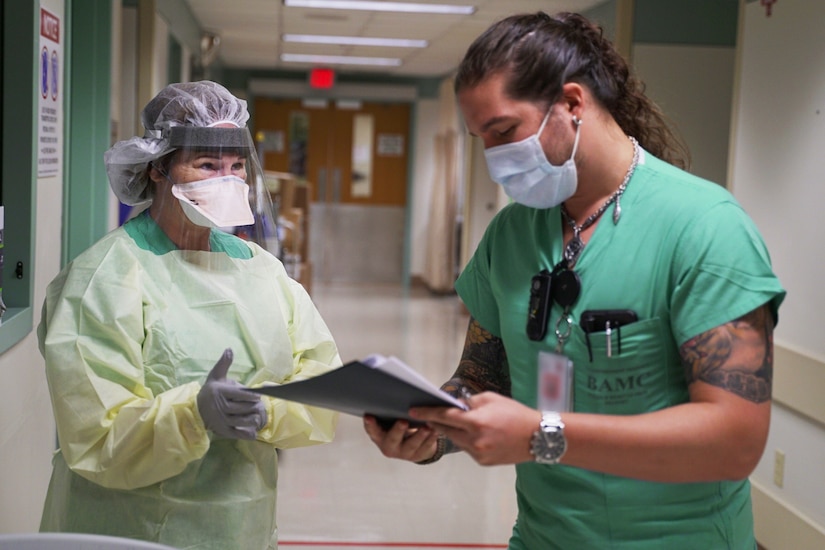
Equipped with lessons learned, BAMC is preparing to shift resources and personnel to ensure hospital readiness in the event of a patient increase. On the preventive front, leaders continue to underscore the importance of safety measures such as hand washing, face coverings, personal protective equipment and physical distancing.
"The ability to remain flexible and agile, while ensuring the delivery of safe, high quality care, has been vital since the start of the pandemic," Army Brig. Gen. Shan K. Bagby, BAMC commanding general, noted. "Nearly a year ago, the San Antonio Military Health System moved out quickly to ensure the safety of our patients and staff, and we continue, as a system, to do everything possible to preserve their health and wellbeing."
Key leaders at BAMC continually assess current conditions, both within the San Antonio Military Health System, Joint Base San Antonio and across the community to ensure "we are all in step with each other and working effectively as a team," Air Force Col. Heather Yun, deputy commander for medical services, explained. Leaders across the organization also evaluate personnel and resources, to include personal protective equipment, on a daily, sometimes hourly, basis to ensure they are tracking trigger points for every contingency.
"These assessments help shape our posture and ensure we are ready to respond quickly and appropriately, whether it's scaling back elective surgeries to increase bed capacity or leaning more heavily on virtual care to protect patients and preserve PPE," Bagby said.
Health care personnel are a trickier resource to manage for a military hospital. Unlike their civilian counterparts, military personnel are called on to deploy in support of overseas operations, as well as humanitarian missions and stateside efforts. In recent days, numerous BAMC health care professionals have been assisting in the hard-hit areas of North Dakota as well as in El Paso, Texas, about eight hours west of San Antonio.
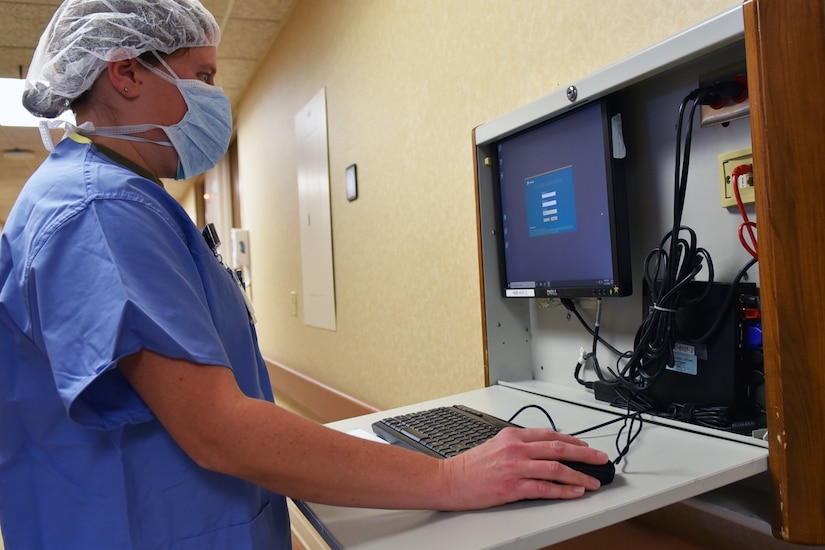
BAMC has also offered to accept non-COVID-19 beneficiaries from William Beaumont Army Medical Center in El Paso, freeing up their capacity to admit additional TRICARE patients with COVID-19 as needed.
"BAMC is proud to support our El Paso neighbors and colleagues," Bagby said. "We will continue to work alongside our Military Health System partner to help relieve the stress on their local health care system as needed."
In the event of a patient increase and to avoid shortages to critical care areas, BAMC is prepared to draw nurses and technicians from outpatient clinics as well as lean on its partner, the Institute of Surgical Research Burn Center, which is housed in the hospital.
These combined efforts have helped to ensure BAMC stands ready to support both military and community-based missions.
"The keys to our success so far have been in communication, deference to expertise, and collaboration, and we are relying on those in our current response as well to keep us agile and on the right track," Yun said. "We are in constant communication with our staff from all across the organization to ensure that concerns are addressed as early and effectively as possible, before they become safety issues. And we are relying on our subject matter experts who are keeping up with the science and advances in their field to provide counsel and refine our responses."
As with all military hospitals, BAMC primarily provides care to active duty, military retirees and family members. However, as the only Level I trauma center in the Defense Department, BAMC has a unique community role within the local trauma network. Alongside its Level I partner, University Health System, BAMC administers lifesaving care to more than 4,500 trauma patients each year, including 750 burn patients, from an area that stretches across 22 counties in Southwest Texas and encompasses 2.2 million people.
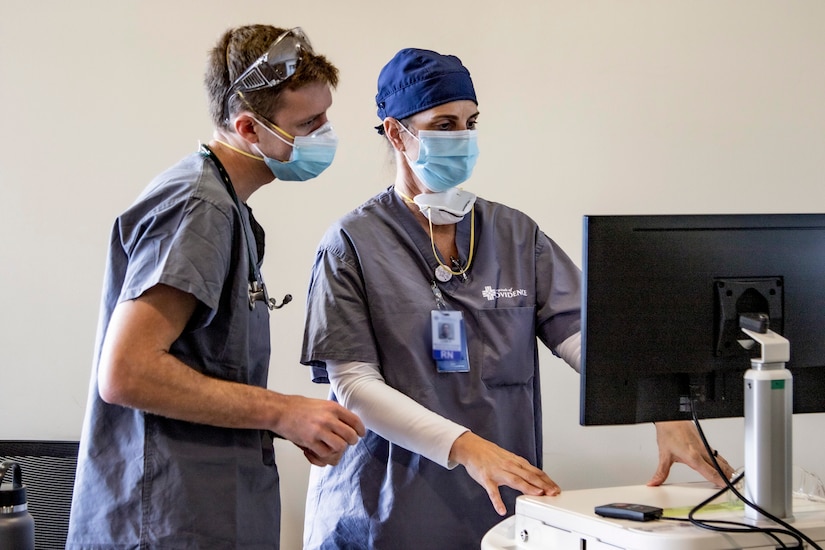
Of the over 4,500 trauma patients admitted each year, about 85% are community members without military affiliation. The Secretary of the Army Designee, or SECDES, program enables BAMC to receive civilian trauma patients in a military treatment facility. Traumas range from gunshot wounds and stabbings to vehicle accidents and severe burns, many of which bear striking similarities to combat wounds. As a trauma center, service members from a vast array of specialties are able to hone valuable medical skills while aiding the community they call home.
"Our close partnership with Southwest Texas Regional Advisory Council, University Health System and the other local health care systems allows BAMC to seamlessly integrate into community crisis responses, Air Force Col. Patrick Osborn, deputy commander for surgical services, said.
Working alongside STRAC, which coordinates the region's trauma and disaster relief response, and UHS, BAMC is fully integrated within the local trauma network, Osborn said.
This has been evident in recent months. This past summer, BAMC took on additional trauma patients to ease capacity at local hospitals. Additionally, BAMC continues to care for the area's most critically ill COVID-19 patients, to include beneficiaries, veterans and civilian patients, through the use of extracorporeal membrane oxygenation, or ECMO, treatment, Osborn noted.
ECMO is a heart-lung bypass system that circulates blood through an external artificial lung, oxygenates it, and delivers it back into the bloodstream. Rather than treat the condition, ECMO performs the job of the patient's heart and lungs, buying the patient precious time to respond to treatments and heal. Requiring a highly specialized team and equipment, BAMC is one of a few hospitals within the city with this capability, and as with trauma, accepts civilian patients through the SECDES program.
"As much as able, BAMC is easing the burden on local health care resources by admitting civilian ECMO patients and seeking out military beneficiaries that can be transferred from community hospitals," Osborn said.
The mutual support of BAMC's military and community partners is key to mission success, the commander noted.
"Due to their support and the expertise of this team, the San Antonio Military Health is able to continue to ensure safe, quality care for our 250,000 active duty and military beneficiaries while preserving its readiness role as a worldwide response platform and sustaining the Level I trauma support of our region," Bagby said.
Dec. 9, 2020
Today, the Department of Defense announces that it intends to appoint Hudson Institute China policy expert Michael Pillsbury to serve as the Chair of the Defense Policy Board, and former National Nuclear Security Administration (NNSA) Administrator Lisa Gordon-Hagerty as a member.
The DPB provides independent, informed advice concerning matters of defense policy and focuses on issues central to strategic DoD planning as well as policy implications of force modernization. Each member is appointed based on his or her professional experience.
“The Department of Defense is proud to announce its intent to appoint Mr. Pillsbury and Ms. Gordon-Hagerty to the Defense Policy Board,” said Dave Vasquez, a Department of Defense spokesman. “We have every confidence the DPB and the Department will be well served by the decades of national security experience each of these individuals bring to the Board. We greatly look forward to their service to the Department.”
About the Defense Policy Board
The Defense Policy Board was established to provide the Secretary of Defense and the Deputy Secretary of Defense, independent, informed advice and opinions concerning matters of defense policy through the Under Secretary of Defense for Policy (USD(P)).
Dec. 9, 2020
I have been closely following Vanessa Guillen’s case these past few months. While my heart is heavy with the tragedy of her death, my commitment to addressing the issues of sexual assault and sexual harassment is resolved. As a department we must do better, and we will do better. I support Army Secretary Ryan McCarthy’s decision to hold leaders at multiple levels accountable and will be closely reviewing the results of the Fort Hood Report and the People First Task Force.
Acting Defense Secretary Chris Miller and his wife, Kate, along with Second Lady Karen Pence addressed the importance of MSEP in pre-recorded remarks.
"As a former active duty soldier and military spouse, Kate and I recognize the cost of the sacrifices made by those in uniform and their loved ones," the acting secretary said. "They bear the burden of grueling deployments, they uproot their lives every few years for permanent change-of-station moves, and … to honor them, the Department of Defense and a grateful nation are committed to improving their quality of life and providing our families the support they rightly deserve, every step of the way."
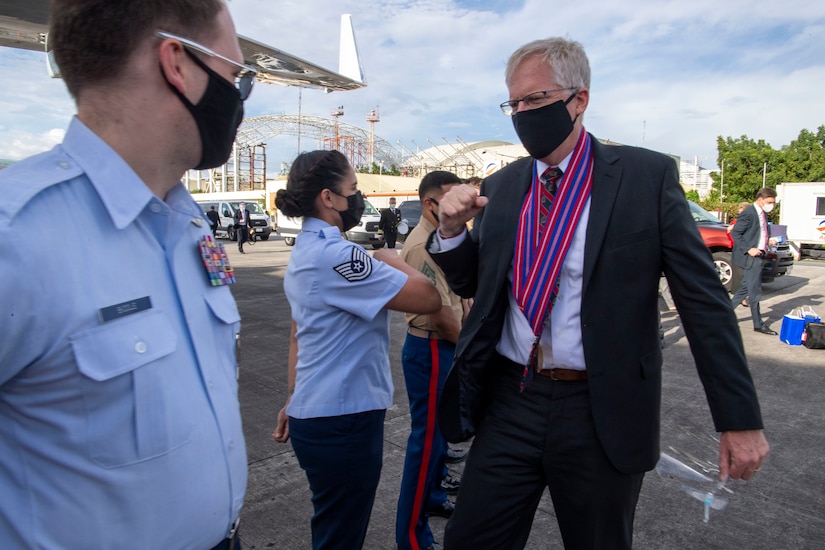
MSEP is a one-of-a-kind partnership that plays an important role in recruiting and retaining military spouses. Since 2011, MSEP has hired more than 175,000 military spouses for jobs across the country. Military spouses bring many talents and experiences to the private sector, Miller noted.
"This partnership comes with great responsibility," the second lady said. "I've heard that the vetting process is serious business, and that partners are required to sign a statement of support with the DOD to commit to recruit, hire, promote and retain military spouses to all of the new partners."
Pence thanked the company partners for taking an important step to support the nation's military spouses.
"Your new partnership will make a difference and help our nation's military readiness," she said, addressing the 85 new partners. "It's important to take care of our military spouses and their children so that service members can stay focused on their missions and remain ready to fight and protect our freedoms."
Pence said when she unveiled the Military Spouse Awareness Campaign in 2018, she wanted to elevate and encourage the nation's military spouses. And in her travels throughout the country and the world, she's educated military spouses on employment solutions, she added.

"For example, we improved the policy for spouses pursuing a degree or certification," Pence said, adding, "You cannot be made ineligible solely because your service member has been promoted to a higher grade. Military spouses can now retain their state of residency for business purposes if they move out of state as a result of a change of station."
The secretary of defense is now authorized to fund the creation of interstate compacts to improve license portability, the second lady added.
MSEP is especially important this year as people navigate the most challenging public health crisis in more than a century, Miller said. "Yet, if there's one thing we all know is that military families are well-equipped in overcoming the challenges. And over the past year, our nation's employers witnessed their skill resilience firsthand."
MSEP is part of a broader effort to help military spouses in the DOD's global community. It also helps spouses hit the ground running after moving to a new state. The partnership has improved license reciprocity among states, too, and 43 states have enacted legislation on reciprocity in the past three years, Miller noted.
Through MSEP, DOD is also engaged with the State Department to improve on- and off-base hiring opportunities for overseas spouses and dependents, the acting secretary said.
"Thanks to [several] efforts, we've seen a 20% increase in military spouse hiring just this year. That's an achievement we should all be proud of," Miller added.
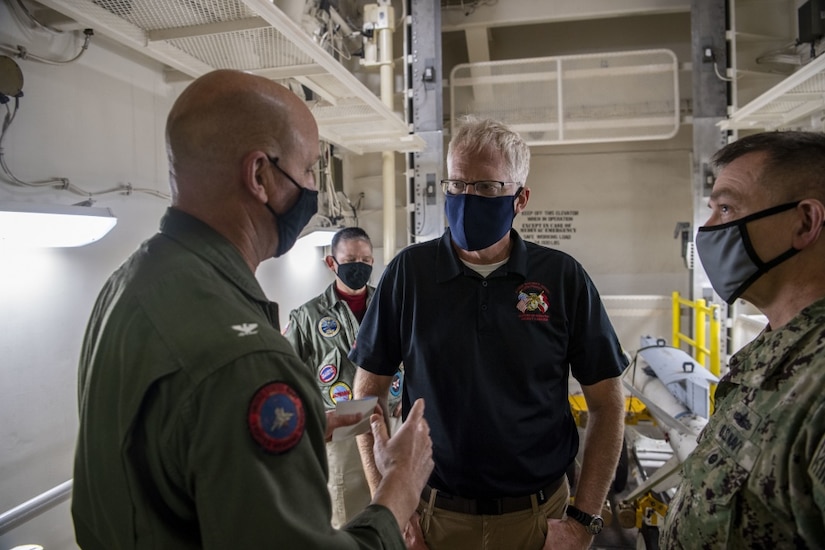
The acting secretary commended the newest members of MSEP for their commitment to U.S. troops and their loved ones, especially during such a challenging time, he said, adding that he hopes more businesses and organizations follow that devotion to military family members and their service members across the force who endure the hardships of military life while navigating the complexities of employment and other challenges.
"For this, you have our admiration, gratitude and commitment to support you every step of the way," Miller said to MSEP partners.
The second lady challenged MSEP business leaders to spread the word about the significant role that military spouses — the home-front heroes — play in the defense of the country. "Join us as we encourage other business leaders to join this vital movement to hire and retain military spouses," she encouraged.
Dec. 9, 2020
The Office of the Senior Enlisted Advisor to the Chairman of the Joint Chiefs of Staff (OSEAC) announced today the following assignment:
Navy Command Master Chief Donald O. Myrick, currently assigned as the command master chief for the Office of the Naval Inspector General, Washington, D.C., has been selected to replace Air Force Chief Master Sgt. Jason L. France as the command senior enlisted leader for U.S. Transportation Command, Scott Air Force Base, Illinois.